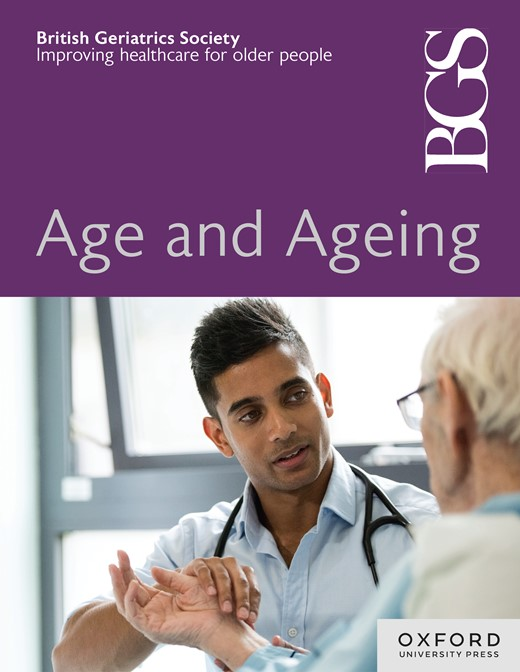A patient-centered nutritional intervention with a new fortified high-protein high-energy paste: an observational study to assess nutritional intakes in hospitalized older adults
IF 6
2区 医学
Q1 GERIATRICS & GERONTOLOGY
引用次数: 0
Abstract
Background Protein-energy undernutrition in hospitalized older adults remains a major issue that warrants purposeful intervention. Objective To assess how a nutritional management process, using a fortified high-protein, high-energy paste, could help meet patient nutritional requirements. Methods An observational study was carried out between September 2021 and April 2022 in a community hospital’s multidisciplinary care unit (MCU) and geriatric rehabilitation unit (GRU). Hospital stays of patients aged 75 years or older were included. Intakes were recorded for each component of each lunchtime and evening meal throughout the hospital stay. Daily energy and protein intakes were compared to patient recommended requirements, i.e. 30 kcal/kg/day and 1.2 g/kg/day. Results Analysis included 403 hospital stays (296 in the MCU, 107 in the GRU). Energy recommended requirements were met in 23.3% of MCU stays and 31.8% of GRU stays. Daily energy intakes were lower than the recommended level in both units (P < 0.001): 25.2 ± 7.7 kcal/kg/day in the MCU and 27.0 ± 6.9 in the GRU. Protein recommended requirements were reached in 45.3% of MCU stays and 58.9% of GRU stays. Daily protein intakes were not significantly lower than the recommended level in both units: 1.17 ± 0.39 g/kg/day in the MCU (P = 0.10) and 1.26 ± 0.35 in GRU (P = 0.96). Conclusions The nutritional management process helped patients covering their protein requirements especially in the geriatric rehabilitation unit, but more efforts are still needed to reach energy requirements. Healthcare teams should be alert to the dependency in activities of daily living of patients.一种以患者为中心的营养干预,采用一种新的强化高蛋白高能膏剂:一项评估住院老年人营养摄入的观察性研究
背景:住院老年人的蛋白质能量营养不良仍然是一个需要有目的干预的主要问题。目的评价使用强化高蛋白高能量膏剂的营养管理过程如何帮助满足患者的营养需求。方法于2021年9月至2022年4月在一家社区医院的多学科护理单元(MCU)和老年康复单元(GRU)进行观察性研究。包括75岁及以上患者的住院时间。在整个住院期间,记录每顿午餐和晚餐的摄入量。将每日能量和蛋白质摄入量与患者推荐需求(即30千卡/公斤/天和1.2克/公斤/天)进行比较。结果共纳入403例住院时间(MCU 296例,GRU 107例)。23.3%的MCU停留和31.8%的GRU停留达到了能量推荐要求。两个单位的每日能量摄入量都低于推荐水平(P <;0.001): MCU为25.2±7.7 kcal/kg/天,GRU为27.0±6.9 kcal/kg/天。45.3%的MCU停留时间和58.9%的GRU停留时间达到了蛋白质推荐需求。两种单位的日蛋白质摄入量均未显著低于推荐水平:MCU为1.17±0.39 g/kg/天(P = 0.10), GRU为1.26±0.35 g/kg/天(P = 0.96)。结论营养管理过程有助于满足老年康复病房患者的蛋白质需求,但仍需付出更多努力来达到能量需求。医疗团队应警惕患者在日常生活活动中的依赖性。
本文章由计算机程序翻译,如有差异,请以英文原文为准。
求助全文
约1分钟内获得全文
求助全文
来源期刊

Age and ageing
医学-老年医学
CiteScore
9.20
自引率
6.00%
发文量
796
审稿时长
4-8 weeks
期刊介绍:
Age and Ageing is an international journal publishing refereed original articles and commissioned reviews on geriatric medicine and gerontology. Its range includes research on ageing and clinical, epidemiological, and psychological aspects of later life.
 求助内容:
求助内容: 应助结果提醒方式:
应助结果提醒方式:


